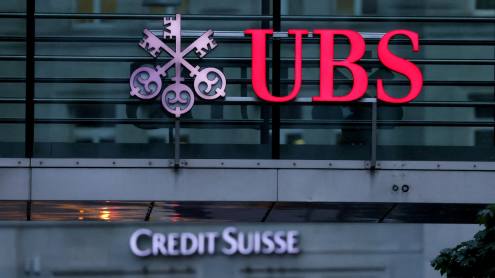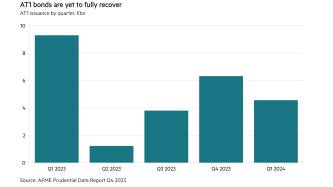Any purchaser is unlikely to come from within Finland itself, not least because it would cause problems with the EU competition authorities in Brussels. Although there are nearly 350 banks in the country, the locally owned OP Bank Group and Sampo Bank and the pan-Scandinavian bank Nordea hold 85% of the lending and deposit markets. These three banks also have nearly 70% of the mutual funds and, since the purchase by OKO Bank (part of the OP Group) of non-life insurer Pohjola, nearly 65% of the insurance sector.
Nor do bankers think that potential purchasers are likely to come from outside the region. They argue that it is not yet the right time for international banks to enter the Scandinavian market because the price is likely to be too high, competition is very intense and the opportunities for squeezing costs further are very low.
“Any changes will be kept within Scandinavia and will be made by banks that see advantages from extending their interests into another regional country. Those interested in entering the market could include Swedish private bank SEB and Danske Bank, which have no real presence in Finland,” says one banker.
Limited options
The problem for any purchase is that, following the consolidation of recent years, there are few choices. Nordea is already part of a large pan-Scandinavian Group and OP Banken has a 700-strong branch network. The 300 smaller banks are of little interest to an overseas purchaser and are protecting their franchises through co-operation and distribution agreements.
That effectively leaves Sampo Bank as the most likely target. It has the strongest overseas presence of the Finnish banks, a strong increase in profits and 100 branches concentrated in the country’s largest cities where economic growth is fastest. It is respected for its range of services and its ability to reduce costs. The restructuring of the bank was recently completed with the consolidation of its investment services into the banking operation.
Finland is also an attractive market for a Scandinavian. Although margins are tight and the corporate sector is growing more slowly than in recent years, there is steady growth in the retail market, particularly mortgages, and there is significant potential in asset and wealth management.
Another attraction of buying a Finnish institution is that the country has historically had close trading links with Russia and other eastern European states and is starting to exploit them.
“The importance of Russia is growing. Finnish companies are moving towards making some serious investments there. In the past, the investments have been small and in areas where the risks are small. Now we are starting to see serious amounts of money going into that market,” says Olli-Petteri Lehtinen, co-head of the corporate division at Nordea in Finland.
Russian connections
|
| At Sampo Bank, the president and chief executive, Mika Ihamuotila, says that Finnish companies are “in the best position to take advantage of economic growth in the former Soviet states and eastern Europe. I talk with a lot of chief executives and they all talk positively about Russia. They are particularly well positioned because they understand the culture”. |
The banks are adopting different strategies to support these customers. Nordea is currently restructuring its Russian operations so that it can build a stronger presence in that market. It has just sold its 26.44% stake in International Moscow Bank and plans to either buy a small to medium-sized Russian bank or to obtain its own banking licence.
Tom Ruud, Nordea’s head of corporate and institutional banking, says that setting up a fully controlled operation will enable the bank to support its corporate clients – many of them from Finland – more effectively while developing other opportunities in the Russian and retail business.
Nordea is a genuinely pan-Scandinavian bank that has established an international presence in markets where its customers have business. And Sampo Bank is the only Finnish financial institution with a meaningful foreign operation: its Baltic subsidiaries represent about 6% of its assets and it also has a presence in Sweden, Denmark, Norway and the Baltic states through its P&C insurance subsidiary.
Sampo Bank is now increasing its presence in Russia. Earlier this year, it signed an agreement to acquire Industry and Finance Bank (Profibank), a Russian-owned financial institution based in St Petersburg.
Profibank, which has total assets of €1.2m and equity of €400,000, has a full range of banking licences, including one that enables it to take deposits from individuals. Sampo’s strategy is to offer retail banking, first in the St Petersburg area, and offer corporate banking services to its Finnish and Nordic customers operating in Russia.
Local focus
OKO Bank has adopted a rather different strategy. On the retail banking side, it has decided to “concentrate on the Finnish market”, and it is limiting its overseas presence, says Timo Ritakallio, first executive vice-president of the bank.
“If you have only a few overseas branches it means nothing to your customers. Our view is that if you find a strong local player to work with, they can provide much more in terms of value-added services,” he says.
OKO Bank has representative offices in Tallinn and St Petersburg, and a corporate finance subsidiary in Moscow. “When any of our corporate clients do mergers and acquisitions, we have 10 people there who can provide advice and services,” says Mr Ritakallio.
Providing services to meet the international needs of customers becomes even more important when competition is so intense in the domestic market. “Competition has become even tougher, particularly on the retail side,” says Pekka Nuuttila, executive vice-president at Nordea Bank Finland.
Solid results
The result of this competition is that margins are as tight as they are in Norway and Sweden. But this is more than compensated by the fact that the foundations of the financial sector remain strong. The three leading banks have, say analysts, strong franchises, deliver sound performances and have a good risk profile.
They are also delivering good earnings for their shareholders. Sampo Group’s profits grew by €347m to €1.3bn, with return on equity growing to 28.4% from 26.5%. The OP Bank Group’s earnings before tax were €579m, an increase of 13% on the previous year, with net interest income up by 3% and comparable commission income by 7%.
The banks have benefited from increased retail lending, driven mostly by mortgage lending, as well as rising earnings from wealth management, brokerage, mutual funds and insurance. OKO Bank last year bought non-life insurer Pohjola in a drive to earn as much as possible from fee income, at a time when problem loans and loan losses are at record low levels.
Sampo Bank’s Mr Ihamuotila says one reason for the low level of bad debts is that there is a strong culture in Finland of repaying loans, particularly those taken out to finance house purchases. “You won’t find a country in Europe where there is more a matter of honour about repaying loans. We went through a period when unemployment rose to 23% and interest rates were 13%. Other countries in the region with similar problems had to suffer credit losses, but there were virtually none in Finland,” he says.
That is one reason why bankers remain confident that the bad debt profile will remain low even though mortgage lending – stimulated by low interest rates and rising property prices as Finns move to the major cities in ever greater numbers – is expected to continue rising, leading to a potential overheating of the housing market.
Helsinki bankers say that a far greater challenge to bank profitability comes from the structure of the lending and deposit markets. With most of the loan growth coming from housing finance, flexible rate lending will continue to account for 80% of total lending. In contrast, more than half of the deposits, which still form a bulk of the funding, are tied to fixed rates.
Corporate business remains profitable, though, benefiting from the strength of the local economy and the regional markets. Indebtedness is lower than in the early 1990s and there is growing demand for investment funding – this market is dominated by the local banks which provide three quarters of corporate credit in the country.
“Finnish corporates have been performing well for the last three or four years. And in the last 12 months the growth rate of corporate credit has been 20% at OKO Bank, mostly for financing mergers and acquisitions,” says Mr Ritakallio.
However, one element of this sector that is both expanding the fastest and could potentially be the biggest cause for concern is private equity.
Private equity
More and more companies are being seduced by the attractions of being bought by highly geared private equity firms that are prepared to offer higher prices than are available on the stock markets or from other industrial groups. And this is the one market where international banks, such as Royal Bank of Scotland, are offering serious competition to local organisations.
“There is a lot of liquidity in this market and some companies feel that being in the quoted sector is not delivering real money for them,” says Nordea’s Mr Lehtinen.
Mr Ritakallio agrees, arguing that private equity has become very fashionable because “there is a lot of competition between funds, which have a lot of liquidity. The combination of low interest rates and high liquidity means it is both easy and cheaper to raise money – so buyers are taking more leverage, which means they can pay more than industrial players can.”
Typical of these transactions was the purchase by Nordic Capital of the Finnish firm Outokumpu’s copper fabrication business for €599m, a business that had annual sales of €1.7bn. Nordea Corporate Finance acted as financial adviser to Nordic Capital as well as providing a €555m financing package.
Bankers are coy about saying which deals they regard as overpriced, but Mr Ritakallio says that, while he has kept a conservative credit policy, in the last year, “there have been suggestions that the leveraging of some deals is too high. It means that too much is being paid for some companies. From a bankers’ point of view, now is the time to be careful”.
Other bankers also say there is some cause for concern. According to one: “It does worry me when I see five private equity firms prepared to pay twice as much as the industrial companies bidding. The industrial players should have sources of synergy with potential purchases. But the companies end up going to private equity firms, which are prepared to be much more highly leveraged.”












